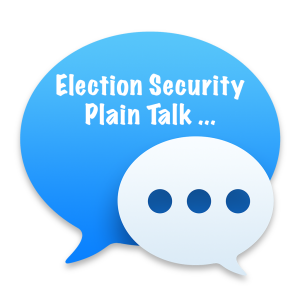Plain Talk Series on Election Security #2: Costs of Ditching Paperless Voting
John Sebes

This is the 2nd of a 7-part series of election security vignettes intentionally kept as brief as possible to stick to the main point of the title above. Its intended to acquaint relatively new-comers to election integrity and security, and that includes anyone and everyone from concerned citizens, to journalists, to policy makers.
Part 1 of this 7-part series cut though some really counterproductive misunderstandings about whether improved election security was a choice between “paper” and “machine voting.” But I’ve noticed that often, when that misconception is laid to rest, this next question tends to pop right up: “Is it worth it the cost?”
Well, I believe that our elections are important enough to protect our voters from computer glitches that name a winner who didn’t get the most votes – plenty of worth.
Today, in many parts of the U.S., we the people can’t really get proof of claims that these errors didn’t happen. That disparity is horribly unfair – every voter all across the country should have equal protection, and equal confidence in their election results.
But if you’re concerned that the cost is high, please remember these plain facts about voting machine upgrades:
- There are many options that can drive cost up or down.
- States and localities get to make their own choices among the options.
- $380M of Federal funds to the states in 2018 continued the path of Federal taxpayers footing most of the bill for whatever the states choose.
- Current legislative activity aims to provide more Federal funding to complete the job of eliminating paperless voting and replacing old DREs.
As a result, the decisions about cost are not mainly an issue for legislation or policy-making at the Federal level. Instead, decisions are largely left where they belong, at the state level. Different states have or will choose different options, including:
- The most expensive option: the Georgia model where every in-person voter uses a voting machine, and every county will purchase a fleet of them to have several machines in each traditional neighborhood polling place, and precinct ballot counting machines as well.
- A similar, cheaper option of a smaller fleet of only two voting machines in each polling place, sufficient for the needs of voters who require or want machine assistance in ballot marking.
- An option with even less equipment expense, similar to the Colorado practice of mostly by-mail voting, supplemented by vote centers instead of a great many precinct polling places: a modest number of voting machines deployed in each of several vote centers, where any voter can vote (by hand or machine) at any of their county’s vote centers, not only on election day, but on prior days as well.
- All vote-by-mail.
And there are other options too. Yes, there are other cost factors for each option, not just the cost of buying the new improved ballot marking devices in place of old paperless DREs.
Many people in the policy debates disagree over cost models, which I guess is unavoidable. But those disagreements are more or less moot: different states and localities will make their own choices on how to do voting machine replacement, and how to spend Federal and state funds to do so. It’s been happening, and will continue. There is more nuance to discuss about cost, but I’ll do so in a longer piece elsewhere.
All these election security debates are really about how fast we will get to 0% paperless voting in the U.S., accelerated by how much Federal funding. And when we get there, the states can (and I hope do) make a realistic assessment of the expenses they had, and the costs that they will bear going forward. If that happens, then we can have real debate on costs and benefits, based on actual facts, not models.
That fact-based discussion will be essential, because no matter what kind of voting machines we use in the 2020s, we will be replacing those again in the 2030s, and no doubt seeking to make the best use of scarce funds — funds that I expect will be all the more scarce, once we will have learned by doing the real costs of adding cyber-security to the list of our election officials’ duties.
Next: The One and Only Reason to End Paperless Voting
To read more, here are all of the articles in this Election Security Plain Talk Series.



